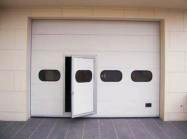Sliding doors are a popular and convenient addition to any home or office space. But over time, they can become stiff, noisy, and difficult to open or close smoothly. Luckily, this problem has a simple solution – lubricate your sliding door! In this blog post, we’ll guide you through the process of how to effectively lubricate your sliding doors.
Why lubricate sliding doors?
Before we get into the details, let’s understand why it’s crucial to lubricate your sliding doors. Regular lubrication helps reduce friction between moving parts, prevents wear and promotes smooth operation. Well-lubricated sliding doors offer many advantages, including reduced noise, longer life and ease of use.
Step-by-step guide to lubricating sliding doors:
1. Clean the sliding door track:
First, remove any dirt, debris, or dust from the sliding door tracks. To do this, you can use a stiff brush, a vacuum cleaner, or a damp cloth. Clean tracks allow the door to move smoothly.
2. Check and tighten:
Check the door for loose bolts or screws. Tighten them to ensure stability, as loose fasteners may cause misalignment or difficulty sliding.
3. Choose the right lubricant:
Choosing the right lubricant plays a vital role in the overall effectiveness of the process. Silicone-based lubricants are ideal for sliding doors because they provide long-lasting lubrication, are dust-proof, and won’t attract dust or debris, preventing future problems.
4. Apply lubricant to the track:
Apply a generous amount of silicone-based lubricant directly to the sliding door track. Move the door back and forth a few times to ensure even coverage. The lubricant will naturally spread and adhere to the track surface.
5. Lubricate the roller:
Next, you need to lubricate your sliding door’s rollers. Locate the roller that is usually located on the bottom edge of the door and apply lubricant to it. Move the door back and forth to distribute the lubricant evenly.
6. Clean excess lubricant:
After lubricating the tracks and rollers, there may be excess lubricant. Wipe off excess lubricant with a clean cloth, making sure it’s not stained with dust or dirt.
7. Test the sliding door:
Finally, test the sliding door by opening and closing it several times to verify that the lubrication provides the required smoothness. If necessary, reapply lubricant and repeat process until desired results are achieved.
Regular maintenance:
To keep your sliding doors in top condition, regular maintenance is important. It is recommended that the door be lubricated at least every six months or as needed based on usage and environmental factors. Also, keep door tracks clean and free of clutter.
Lubricating your sliding door is a simple yet effective maintenance task that can significantly improve your door’s performance and longevity. With the step-by-step guide provided in this blog post, you can make your sliding doors glide smoothly and quietly without any effort. By investing a little time and effort into maintaining your sliding door, you can enjoy the convenience and functionality it provides for years to come.
Post time: Sep-26-2023

